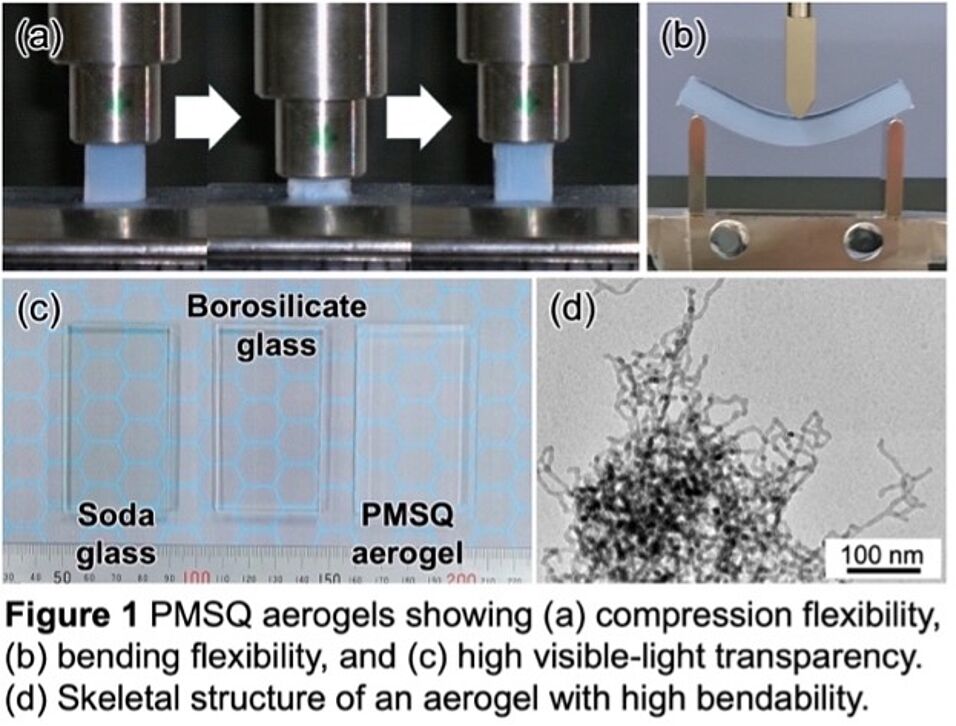Title: Aerogels and hydrogels based on silicone: thermal insulation and catalysis
Kazuyoshi Kanamori, Department of Chemistry, Graduate School of Science, Kyoto University, Kitashirakawa, Sakyo-ku, Kyoto 606-8502, Japan
Abstract:
Silicones are well-known materials with unique physical properties such as mechanical flexibility. Consisting of abundant silicon as a sustainable resource, their applicability is not limited to simple rubbers and oils. The authors are trying to open new possibilities in silicone materials in the forms of aerogels and hydrogels.
In 2007, the authors reported a new transparent aerogel based on poly(methylsilsesquioxane) (PMSQ) derived from methyltrimethoxysilane and its flexibility against compression deformations (Figure 1a)1. The PMSQ gel was prepared via an aqueous sol-gel process in the presence of cationic surfactant. Although supercritical drying had been necessary to obtain monolithic aerogels, we found that the compression flexibility of PMSQ gels allowed drying by simple evaporation of solvent to obtain monolithic aerogels. Thermal conductivity values of obtained PMSQ aerogels are in the range of 13−15 mW m−1 K−1, much lower than conventional thermal insulators such as glass wool (30−40 mW m−1 K−1) and one of the lowest among solid materials. In a modified preparation process in the presence of triblock copolymer (Pluronic) surfactant, the authors found that bending flexibility and visible-light transparency were increased (Figure 1b,c)2. The improvement of bending flexibility relies on the fibrous solid skeletons (Figure 1d), which contain less “neck” regions compared to the linkage of spherical colloids.
The aqueous systems toward silicone polymers are recently developed as a platform to silicone-based hydrogels. Metal-incorporated hydrogels can be designed with suitable combinations of metal ions and ligands, and an example of outcome includes a jellified Karstedt’s catalyst for hydrosilylation with high activity and recyclability.
References
[1] K. Kanamori, M. Aizawa, K. Nakanishi, T. Hanada, Adv. Mater., 2007, 19, 1589.
[2] R. Ueoka, Y. Hara, K. Kanamori et al., Nat. Commun. 2024, 15, 461.

